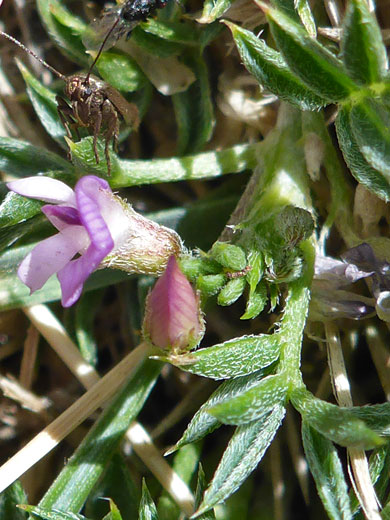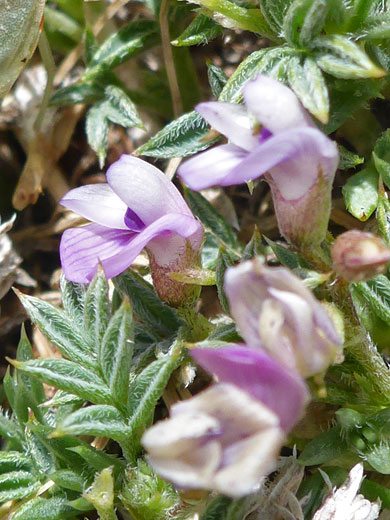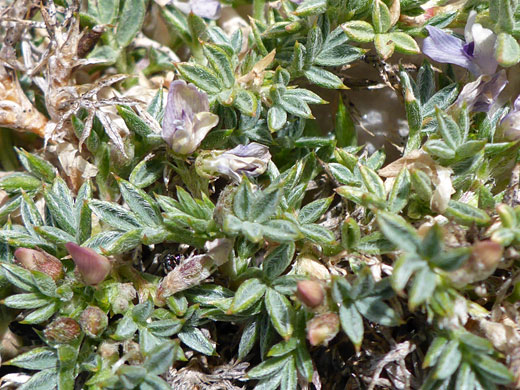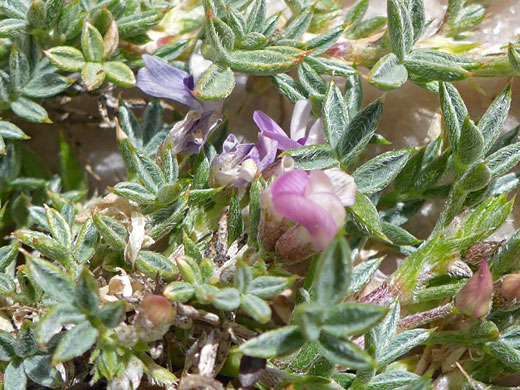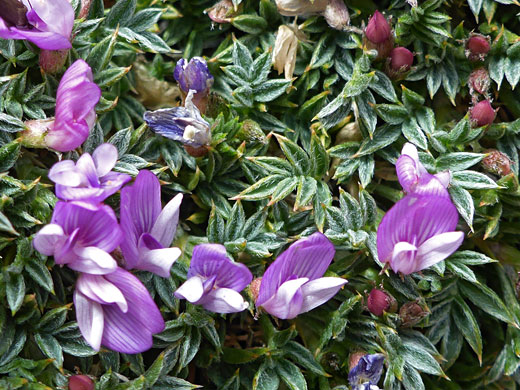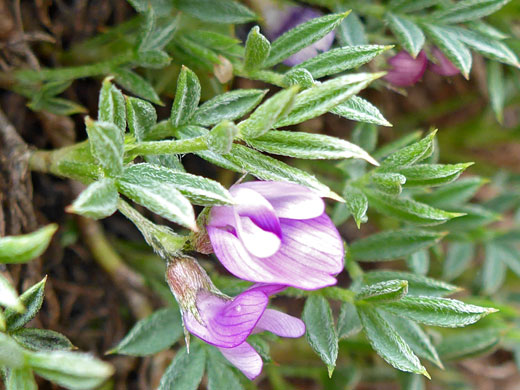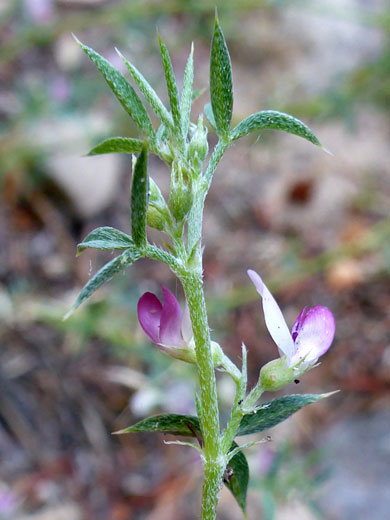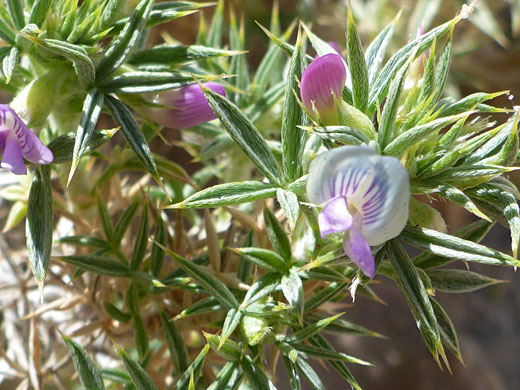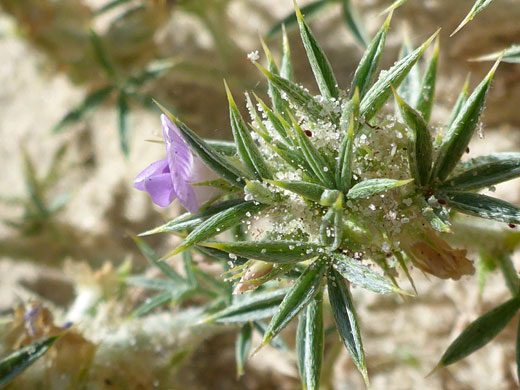Common name:
Spiny milkvetch
Family:
Scientific name:
Astragalus kentrophyta
Main flower color:
Range:
Mostly in and around the Great Basin, the Colorado Plateau and the Rocky Mountain states
Height:
A few inches - stems (up to 12 inches long) grow along the ground
Habitat:
Open, barren, rocky locations, often at or above the treeline, from 4,000 to 12,500 feet
Leaves:
Strigose, up to 1 inch long, pinnately divided into between 3 and 9 narrow leaflets
Season:
June to September
Astragalus kentrophyta is one of the easiest milkvetches to identify because of its spine-tipped leaflets and short-stalked flowers, close to the leaf nodes; other species lack spines on the leaflets, and have flowers are held well above the leaves.
Plants are mat-forming, rising just a few inches, and are small, reflecting their habitat of barren, rocky places at high elevations. Leaves, stems and calyces have a covering of short, strigose hairs, generally appressed, either simple or branched. Leaves are small, and pinnately divided, into narrow, linear leaflets, less than 0.1 inches wide.
Flowers - one, two or three - grow from the upper leaf nodes; they have pink to purple petals, crossed by darker veins, and a greenish-purple calyx for which the teeth are shorter than the tube. The banner petal is recurved by around 45 degrees. Fruits are compressed, finely hairy pods.
There are nine varieties of astragalus kentrophyta, most occupying distinct, non-overlapping regions - identifying characteristics include the hairs (simple or branched), petal color, number of leaflets, the length of the leaflet spines and the number of seeds in the pods.
Plants are mat-forming, rising just a few inches, and are small, reflecting their habitat of barren, rocky places at high elevations. Leaves, stems and calyces have a covering of short, strigose hairs, generally appressed, either simple or branched. Leaves are small, and pinnately divided, into narrow, linear leaflets, less than 0.1 inches wide.
Flowers - one, two or three - grow from the upper leaf nodes; they have pink to purple petals, crossed by darker veins, and a greenish-purple calyx for which the teeth are shorter than the tube. The banner petal is recurved by around 45 degrees. Fruits are compressed, finely hairy pods.
There are nine varieties of astragalus kentrophyta, most occupying distinct, non-overlapping regions - identifying characteristics include the hairs (simple or branched), petal color, number of leaflets, the length of the leaflet spines and the number of seeds in the pods.
All Contents © Copyright The American Southwest | Comments and Questions | Contribute | Site Map


